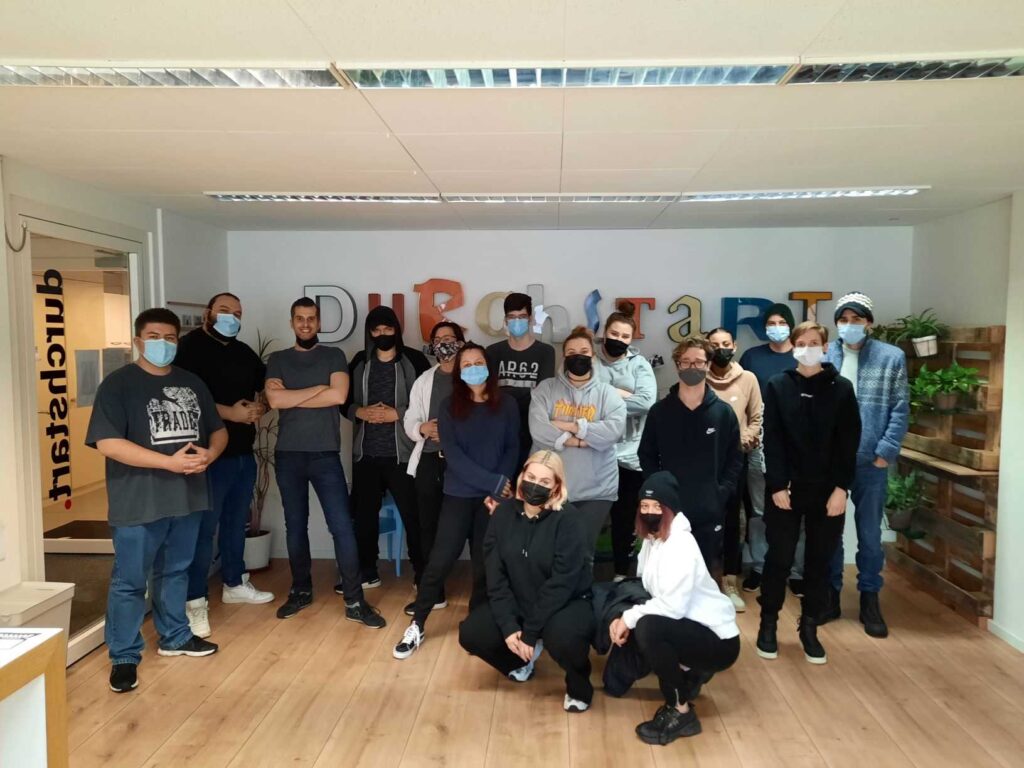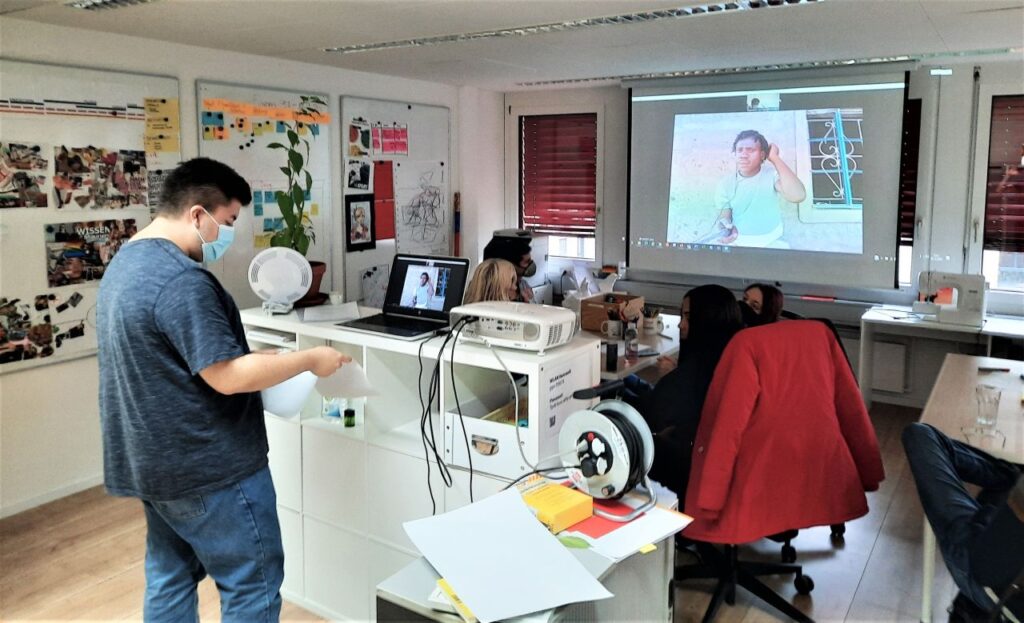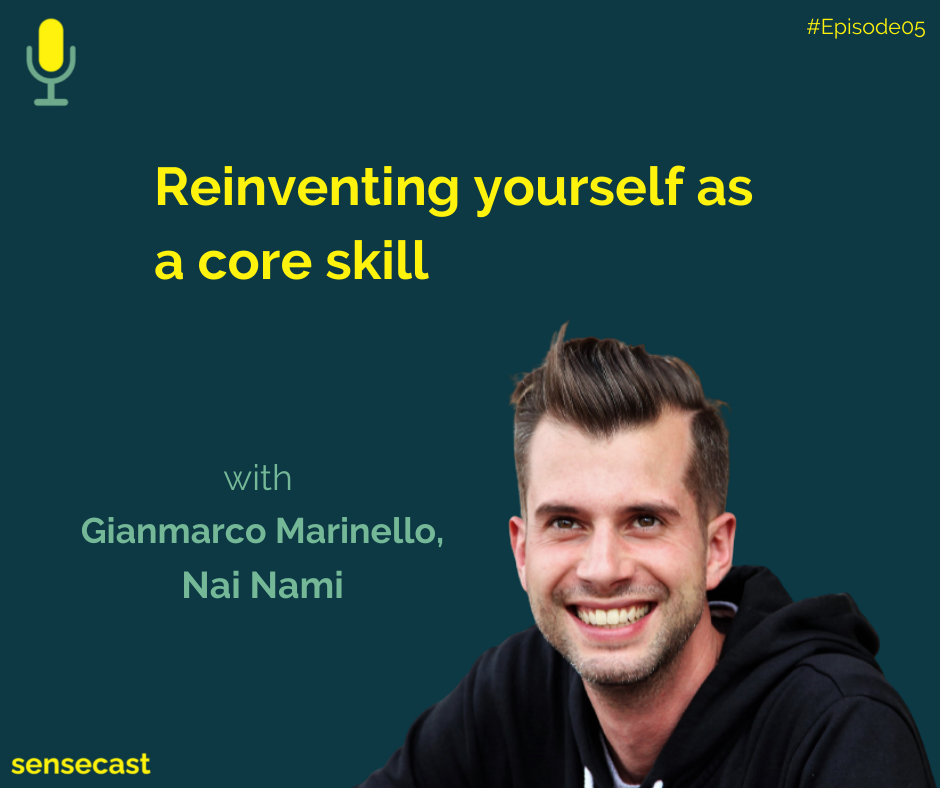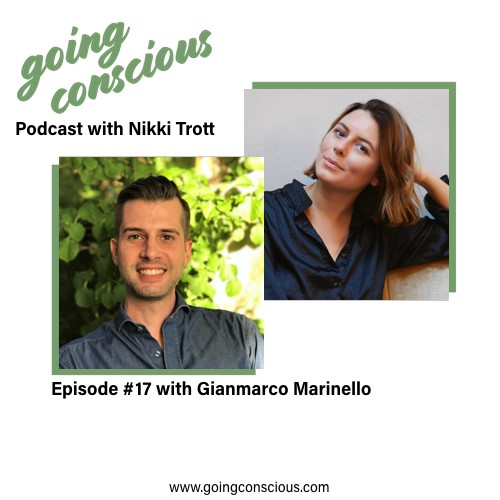In this podcast, I share more about Nai Nami and my journey as a social entrepreneur. Enjoy!
WHAT I DO
Podcast: Reinventing yourself as a core skill
Listen to the full episode HERE
Gianmarco Marinello, social entrepreneur and founder of Nai Nami, joined us in this episode of sensecast. Nai Nami is a social enterprise in Kenya which transforms the street skills and life stories of street children into a job and a source of income for them. They offer a unique storytelling tour in Nairobi to make people experience the city through the eyes of a street child. In his search for meaning and fulfilment in his work life, Gianmarco took on different jobs and roles, which led him to discover his true passion: reinventing himself professionally and helping others to do so as well.
What you will hear in this episode:
- The journey that brought Gianmarco to Kenya
- How Nai Nami was co-created by Gianmarco and the street children on eye level
- The challenge of earning their trust The impact of Nai Nami on the street children and on the whole community
- Nai Nami becoming a self-sustaining business, as Gianmarco’s biggest achievement
- How his journey continued between the corporate and social impact sector
- How having the right mentor can help you change your life
One key takeaway from Gianmarco’s story:
There is only one risk: not trying; failing as a person doesn’t exist!
Listen to the full episode HERE
Podcast: Finding Purpose with Nai Nami
Thank you Nikki Trott for hosting me on your podcast Going Conscious to share more about my journey of finding purpose with Nai Nami.
LISTEN TO THE FULL EPISODE HERE
African street kids help Swiss youths!

Can you imagine? Swiss youths with challenges in life receive help from former street kids and youths from Nairobi’s slums! durchstart is a Swiss organisation that does work integration for youths with challenges. The founder Olivier Moos invited me and the street kids from Nai Nami to do an innovation workshop for his Swiss class.
“If a street child from Nairobi can do it, you can do it too!”

It was a huge success! We were connected live via Zoom and inspired each other. It started with a live tour in the Mathare slum followed by a mentoring session for the Swiss youths. It was fascinating to see what a positive impact ex-gangsters from an African slum can have on Swiss youths!

On the other hand, the Swiss youths developed amazing ideas for Nai Nami with the aim to create additional income during the pandemic: Selling branded Nai Nami masks and making dancing tutorials on TikTok were my favourite ones.
It was such a great experience and it showed me once more that building bridges can lead to awesome opportunities. A big thank you to Olivier Moos – founder of durchstart – for making this happen!
Social Innovation Framework (Download)
Social Innovation is not complicated as long as you follow some specific steps and rules which I summarized in the following document while I was building up Nai Nami:

1. Problem Statement: How can I…
The solution for the problem you want to solve lies in the problem statement itself. Coming up with the right problem statement – which is derived from the root cause of the problem – is the key to success! The problem statement should be as specific as possible and at the same time broad enough not to restrict the idea generation. It changes over time based on the insights gathered during the research phase and it therfore follows an itineration process. Never jump to the idea generation phase before you haven’t understood the root cause of the problem and transformed it into a specific problem statement!
Once you have a proper problem statement, go into the field and start with your research. The following two techniques helped me the most while I was trying to find the root cause of the problem:
The 5 Why’s: Asking 5 five times in a row the question “Why?” (after each answer) often leads to the root cause of an observable problem.
Asking the right questions: In order to get good answers you have to ask good questions. Develop smart questions that nobody has asked before. For example: “Who is your role model and how would this person solve the problem”
2. Idea Generation
Once you have your problem statement as well as the insights from your research, the fun part starts. One of the most powerful tools to develop innovative ideas is the reframing of the problem statement. This can trigger new perspectives in your mind:
“How can we train youth on skills to enable them to find a job?”
– Reframe: Youth have skills
“How can we use youth’s skills to enable them to find a job?
Keep in mind: Findings and insights are not the same! Findings are facts and figures which can be structured and categorised. Insights are a new understanding of the “Why” and often come along with the feeling of “surprise”.
3. Prototyping
Prototyping is a mindset and it needs discipline. Take every opportunity to prototype your idea without wasting time and money. Just do it in the most fastest and most frugal way. Based on the outcome and feedback you can immediately adapt your idea and repeat testing it.

